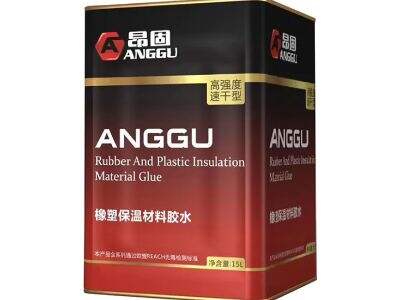Gli adesivi e i sigillanti sono materiali unici utilizzati per incollare oggetti insieme e sigillare giunture o riempire fessure o crepe. Sono essenziali quasi in ogni progetto, dal riparare qualcosa a casa a fare un'attività manuale. Ma a volte, le persone non sanno come utilizzare correttamente questi materiali, e in tali casi può portare a problemi, e il progetto non funzionerà correttamente. In questo articolo, copriremo alcune pratiche regole su come usare colla per schiuma in gomma e sigillanti. Discuteremo anche come selezionare i materiali appropriati e cosa fare in circostanze sfortunate, nonché i metodi migliori per incollare materiali insieme.
Consigli per un'applicazione corretta
Ogni volta che utilizzi qualsiasi tipo di adesivo o sigillante, devi prenderti il tempo di leggere prima le istruzioni. Le istruzioni spiegheranno come utilizzare il prodotto in modo sicuro ed efficace. Assicurati di conoscere le precauzioni di sicurezza da prendere, sia che si tratti di indossare guanti o lavorare in un luogo ben ventilato. Metterne troppo o troppo poco colla per gomma espansa può rendere il legame debole e non tenere correttamente quando si incolla. Spalma la colla uniformemente su tutta la superficie per ottenere l'adesione migliore. Se stai usando un solvente, che è una colla che deve asciugare, assicurati di lasciarlo evaporare o asciugare completamente. Questo creerà un legame emotivo.
Materiali e Superfici che Si Completano a Vicenda
Trova aiuto per scegliere l'adesivo appropriato per il tuo compito. Devi assicurarti che l'adesivo che scegli sia compatibile con i materiali che desideri unire. Un'altra cosa da verificare è che non generi alcuna reazione dannosa o danno tra i materiali. Per ottenere i migliori risultati, le superfici che desideri unire dovrebbero essere pulite, lisce, asciutte e prive di qualsiasi sporco o particelle. Ciò aumenta la probabilità di un'unione salda. Se stai lavorando con materiali nuovi o sconosciuti, può essere saggio eseguire un piccolo test per determinare se si uniscono bene. Farlo ti assicurerà di non avere sorprese in seguito nel tuo progetto.
Rilevamento e risoluzione dei problemi
A volte, anche seguendo tutte le istruzioni e preparando correttamente le superfici, l'unione non va come previsto. Questo può essere dovuto a molte ragioni. Quando vengono utilizzati tipi inappropriati di altri prodotti vengono utilizzati quando non viene effettuata un'adeguata preparazione della superficie, o quando viene utilizzata un'area di lavoro sporca o inadatta per il collaggio, possono verificarsi problemi comuni. Se scopri che qualcosa funziona in modo improprio, la prima cosa da fare è identificare qual è il problema. Esamina come hai utilizzato la colla e cosa affermano le istruzioni. Quando scopri il problema, puoi utilizzare le indicazioni del kit della colla per risolverlo.
Come risolvere i problemi comuni legati agli adesivi?
Se noti di riscontrare problemi comuni con gli adesivi, di seguito sono elencate alcune opzioni che puoi tentare di utilizzare. Se l'adesione non è quella che dovrebbe essere, per esempio, verifica nuovamente il prodotto utilizzato rispetto alle caratteristiche della superficie e assicurati di aver seguito le istruzioni per l'applicazione. Molto spesso, una volta controllato che tutti i pezzi siano allineati correttamente, aggiungere più colla è la soluzione. L'uso di un potenziatore adesivo migliorerà in alcuni casi la forza dell'adesione. È possibile utilizzare morsetti, nastro o pesi per tenere i materiali al loro posto mentre si asciugano, come indicato nelle istruzioni. Ciò aiuterà a mantenere tutto al suo posto durante la fase di固化.
Come creare un'unione — Consigli principali per un buon incollaggio
Migliori Pratiche Per Tutti i Tuoi Bisogni di Adesivi e Sigillanti. Prima, conserva gli adesivi in un luogo fresco e asciutto, lontano dalla luce solare diretta. Questo li aiuta a rimanere in buone condizioni. Quando si apre una tubatura di adesivo, se possibile, utilizzalo subito. Ciò è dovuto al fatto che l'esposizione all'aria ridurrà la sua durata e ne diminuirà l'efficacia. Chiudi sempre bene il tubo dopo aver usato l'adesivo per evitare che aria, polvere e umidità entrino all'interno. Ora che conosci la quantità di epoxidi sulla superficie della fibra, è consigliabile eseguire un completo ciclo di test di incollamento e cura prima di iniziare l'assemblaggio. Ti permetterà di individuare eventuali problemi nel caso qualcosa non vada prima di completare l'intera costruzione. Pulisci sempre il tuo progetto seguendo i materiali e i metodi proposti dal produttore. E quando hai finito con occhiali o guanti, lava le mani accuratamente con sapone e acqua tiepida per restare al sicuro.
In conclusione, FUNAS si impegna a risolvere questi problemi legati agli adesivi e sigillanti comuni, utilizzando tecniche di applicazione appropriate e garantendo la compatibilità dei materiali, nonché fornendo soluzioni per i problemi comuni di incollamento. Dedicare del tempo per comprendere l'uso corretto di questi prodotti, incluso dove applicarli nei propri progetti, risparmierà tempo, prevenirà errori potenziali e assicurerà il successo a lungo termine del proprio lavoro. Tuttavia, un utilizzo improprio di questi materiali può portare alla perdita di tempo, denaro e situazioni potenzialmente pericolose. E i clienti di FUNAS saranno pronti ad affrontare ogni sfida legata ad adesivi o sigillanti grazie alle indicazioni presentate nel testo di cui abbiamo già discusso.

 EN
EN
 AR
AR
 BG
BG
 HR
HR
 CS
CS
 DA
DA
 NL
NL
 FI
FI
 FR
FR
 DE
DE
 EL
EL
 HI
HI
 IT
IT
 JA
JA
 KO
KO
 PL
PL
 PT
PT
 RO
RO
 RU
RU
 ES
ES
 SV
SV
 TL
TL
 ID
ID
 SR
SR
 VI
VI
 HU
HU
 TH
TH
 TR
TR
 FA
FA
 AF
AF
 MS
MS
 GA
GA
 AZ
AZ
 MN
MN
 KK
KK
 UZ
UZ
 KY
KY
